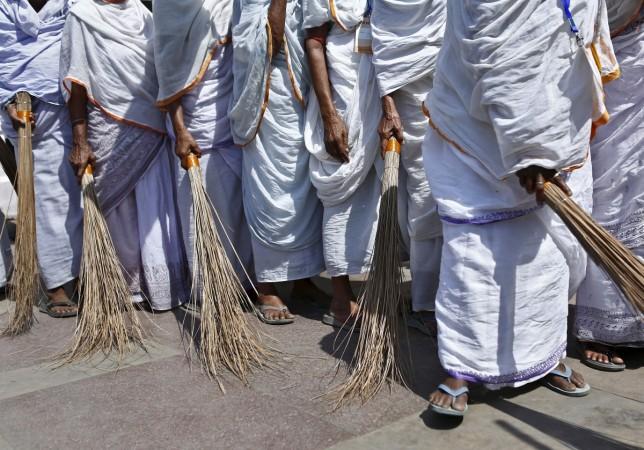
No matter how much they earn or where in the country they reside, average Indian spends more on religious activities than on sanitation.
A recent report by the National Sample Survey Organisation (NSSO) noted that per capita expenditure on sewage disposal and sanitation services for urban and rural India was 0.45 percent and 0.22 percent, respectively, of their overall monthly expenditure on 14 nonessential consumer services (MECS). While the religious services spend for urban and rural India was 5.69 percent and 8.94 percent, respectively.
The NSSO has identified 14 nonessential or miscellaneous consumer services, based on a survey carried out from July 2014 to June 2015. (See Table) It explained expenditure on sanitation services to include wages for toilet cleaners, sewerage cleaners and any waste water treatment plant. And religious services expenditure to include charges, donations, subscriptions to religious institutions and persons.
In absolute number, Indians spent between 30 paisa (rural) to Rs. 1.76 (urban) for their sanitation need and between Rs.12.83 (rural) to Rs. 22.15 (urban) for religious needs. For all the 14 services the total spends amounted to Rs. 331.75 and Rs. 819.36 in rural and urban areas, respectively.
Religiosity among poor
Spend on religious services was high among the poor Indians too. The poorest 20 percent inhabiting vast swathes of Indian villages spent 7 percent of their overall MECS on religious service. It was 6.1 percent spend for their urban poorest counterpart.
The richest 20 percent amongst both urban and rural India spent 4.4 percent and 10 percent of their total MECS on religious service.
The data indicated in some way that Bharat was more religious than India. However, with less than 1 percent expenditure , India was not in anyways significantly better than Bharat in sanitation service.
The Mint noted that the new survey will help in future to gauge the effect of Swach Bharat Abhiyan. Himanshu, a professor at Jawaharlal University, told the daily that open defecation might be a cause for low spends in rural areas. However, contrarily in the cities a few factors such as not accounting money spent on domestic-help and sanitary charges being a part of water meters may dilute the spend data, he added.
| Miscellaneous Consumer Services | Total monthly per capita expenditure | |
| Urban | Rural | |
| Communication | 26.33 | 25.33 |
| Barber & beauty shops | 8.96 | 11.07 |
| TV & radio services | 10.22 | 10.58 |
| Repair & maintenance | 6.74 | 10.27 |
| Tailoring services | 5.86 | 10.18 |
| Other services (not elsewhere covered) | 4.72 | 9 |
| Religious services | 5.69 | 8.94 |
| Recreational & cultural services | 9.95 | 8.59 |
| Domestic services | 12.11 | 1.72 |
| Laundry, dry cleaning, etc. | 3.54 | 1.41 |
| Business services | 3.52 | 1.29 |
| Funeral/burial/cremation-related services | 1.42 | 1.26 |
| Sewage disposal & sanitation | 0.45 | 0.22 |
| Services incidental to transport | 0.49 | 0.14 |
Related

















